Get my best tips to smooth legato playing on the acoustic guitar.
If you want to play more smoothly or efficiently on the acoustic guitar, chances are you've come across the term "legato playing"
But although it seems simple, mastering legato playing will require you to execute certain techniques correctly. Otherwise you'll end up with really choppy sounding playing, instead of smoothly linked notes.
Here are my tips and tricks to master legato playing on the guitar.
What Is Legato Playing?
The word legato is Italian for "tied together", and playing legato simply involves producing a smooth transition from one note to another, hence the name "legato playing".
Legato playing on the guitar usually consists of a combination of hammer-ons and pull-offs.
Hammer-ons involve plucking the first note and tapping the next note quickly with the finger, while pull-offs entail plucking the first note and pulling the string with the finger to sound the next note.
What Is A Hammer On?
Hammer-on is a technique where you play two notes in succession. Begin by plucking the first note as you normally would, and striking the second note with a different finger but on the same string as the first note.
Here's what a hammer-on looks like in tablature and standard notation.
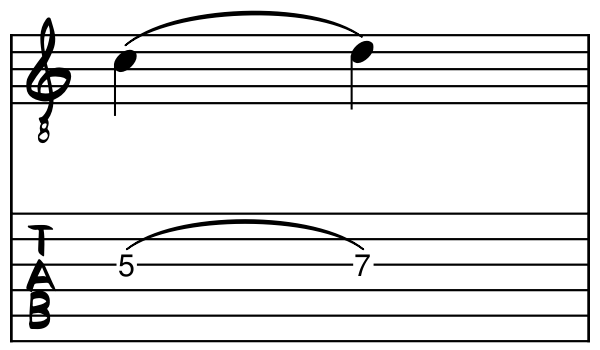
How To Not Hate Hammer Ons
The first time you perform a hammer-on, you probably won't get much sound. That's because I haven't told you the secret to getting a nice, clear, smooth hammer-on. Here it is:
When you perform the tapping or hammering motion, your finger movement must be swift, with a focus on speed and finger accuracy. If your finger arrives too slowly on the fretboard, you will stop the string vibrating before the next note sounds.
Factors that can affect your hammer-on finger being too slow are: hesitation, starting too far away from the fretboard, and bad hand placement.
Make sure that your hand is in a low position to get the most force for the hammer-on. Each finger of the left hand must be close to the fret.
The reason for tapping close to the fret is to get the string to vibrate with minimal effort.
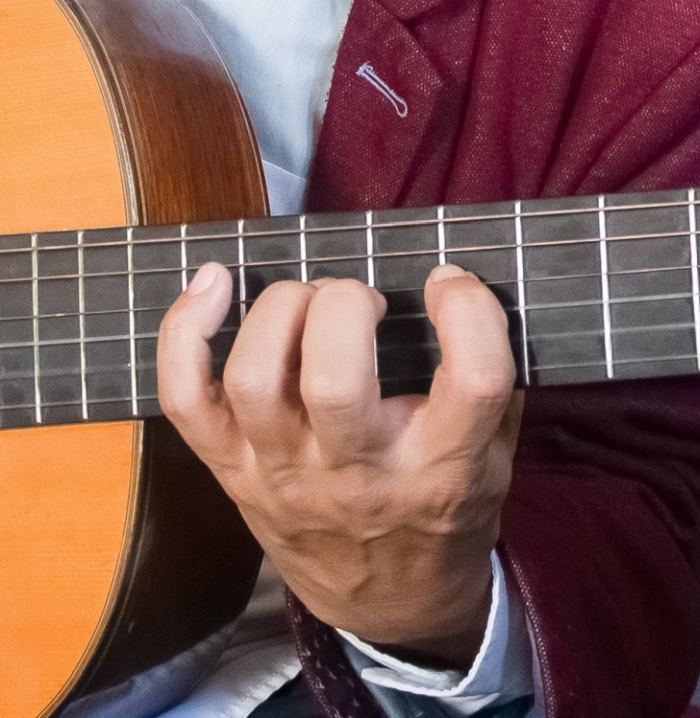
Also notice how each finger is at the same height on the fretboard. You accomplish this by lowering the wrist and aligning all the fingers of the left hand with the strings. This also prevents excess left hand stretching when doing legato playing.
How To Perfectly Play Pull-Offs
The pull off on the guitar essentially involves the same finger placement as for the hammer-on. To perform a pull-off on a guitar, place two left-hand fingers on the same string. Pluck the string to sound the note and quickly pull the higher finger downwards, sounding the lower note.
Here's what a pull-off looks like in tablature and standard notation.
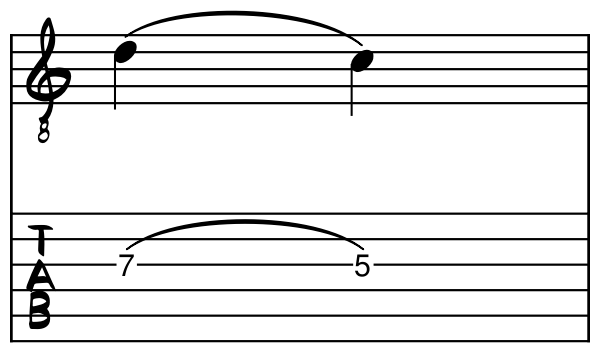
Also note that the pull-off involves a downward motion with the finger, towards the floor. If you just pull the finger away from the fretboard you will get hardly any sound at all!
How To Do Pull-Offs Without Hitting Other Strings
To successfully perform a pull-off without hitting other strings, your finger pressure must be stronger on the lower note, in order to avoid displacing the whole hand.
The finger that completes the pull-off can rest against the lower string. The contact of the finger with the lower string will prevent this string from sounding. You can combine hammer-ons and pull-offs to create a legato playing exercise which is called a trill.
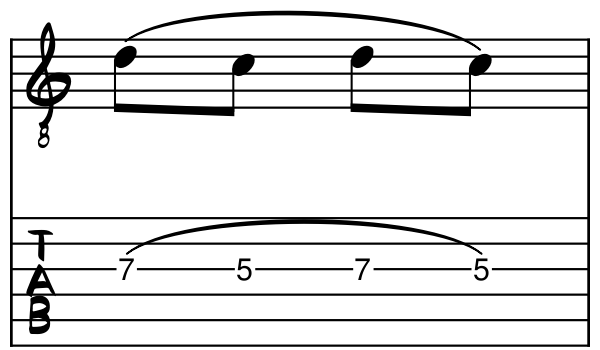
How To Play Fast Pull-Offs
To play faster pull-offs, develop the correct finger pressure needed in the left hand. You will need less pressure on the upper finger, which is the one you pull down on the string with.
You can practice correct finger pressure by holding the lower finger steady with the right hand and practicing the pulling motion with one of the other fingers. Try to get the volume as loud as you can with the pulling action.
Another way to practice the proper finger pressure is to combine the legato playing with a slide or glissando. This is very tricky to sound clean as it involves precise use of pressure.
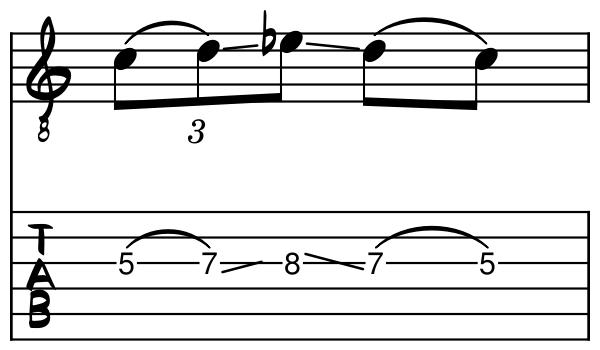
If you want a method that gets you practicing hammer-ons with each finger of the left hand, you should try your hand at playing slur scales.



